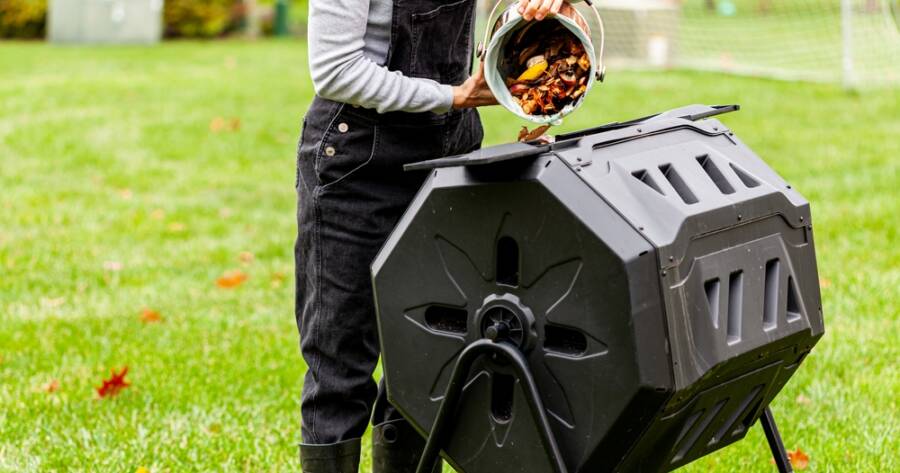Composting is one of the easiest and most rewarding ways to reduce household waste and enrich your garden at the same time. With a little know-how and a small corner of your yard, you can turn everyday kitchen scraps and yard clippings into nutrient-rich soil. Tumbling bins—also called compost tumblers—make the process even simpler. Designed to take the hassle out of turning and maintaining your compost pile, tumbling bins are ideal for beginners and busy gardeners alike.
Why Choose a Tumbling Compost Bin?
A tumbling compost bin is a sealed container mounted on a rotating frame, allowing you to mix your compost easily by turning the bin. Unlike traditional compost piles or static bins, tumblers keep the materials neatly contained, prevent messes, and speed up the decomposition process.
The biggest advantage is convenience. Instead of using a pitchfork to turn your pile manually, you simply rotate the bin every few days. This helps mix oxygen into the contents—something compost microbes need to break down organic matter efficiently. Tumblers also tend to produce compost faster, often within six to eight weeks under the right conditions.
They’re also more pest-resistant than open piles. With a sealed design, tumblers help keep rodents, insects, and raccoons out of your compost, making them especially well-suited for urban or suburban backyards.
What You Can and Can’t Compost
Successful composting starts with knowing what to put in—and what to keep out. The goal is to maintain a balance between “greens” (nitrogen-rich materials) and “browns” (carbon-rich materials). A good mix ensures your compost breaks down efficiently and doesn’t develop unpleasant odors.
Green materials include:
- Fruit and vegetable scraps
- Coffee grounds and filters
- Grass clippings
- Fresh plant trimmings
Brown materials include:
- Dried leaves
- Shredded newspaper
- Cardboard (non-glossy)
- Straw or sawdust (from untreated wood)
Avoid composting meat, dairy, greasy food, and pet waste, as these can attract pests and introduce harmful bacteria. Likewise, avoid synthetic or chemically treated materials that won’t break down naturally.
For best results, aim for a ratio of about 2 parts browns to 1 part greens. This helps maintain airflow and moisture balance, which are both essential for healthy compost.
How to Use and Maintain Your Tumbling Bin
Getting started with a tumbling bin is straightforward. Begin by adding a few handfuls of brown materials to create a base layer. Then add kitchen scraps or yard waste as they become available. Each time you add new material, give the bin a few turns to mix everything together.
Rotate the bin every two to three days. This keeps oxygen moving through the compost and speeds up the breakdown process. If your compost is too wet or smells sour, add more browns to soak up excess moisture. If it’s too dry or decomposing slowly, add greens or a splash of water to get things moving again.
The compost should feel like a damp sponge—moist, but not soggy. In warmer weather, compost can finish in as little as four to six weeks. You’ll know it’s ready when it looks dark, crumbly, and smells earthy.
Most tumblers are divided into two chambers, which allows you to fill one side while the other finishes breaking down. This ensures a steady supply of compost for your garden without interruptions.
Using Your Finished Compost
Once your compost is ready, it’s time to put it to good use. This nutrient-rich soil booster can be used in a variety of ways throughout your yard:
- Garden beds: Mix compost into your soil to improve texture, drainage, and fertility.
- Potted plants: Blend compost with potting mix to give indoor and outdoor containers a nutrient boost.
- Lawn care: Sprinkle a thin layer over your lawn to feed the grass and support healthy root growth.
- Mulch: Spread compost around trees and shrubs to retain moisture and discourage weeds.
By using your own compost, you reduce reliance on chemical fertilizers, enrich the soil naturally, and support a healthier ecosystem in your yard.
A Simple Step Toward a Greener Lifestyle
Composting with a tumbling bin is a simple and satisfying way to cut down on food waste while giving your garden a powerful natural boost. With just a little space and a few minutes each week, you can turn leftovers into life-giving soil—no complicated process or back-breaking labor required.
Whether you’re a seasoned gardener or just starting your sustainability journey, a tumbling compost bin can make a big impact with minimal effort. Start turning waste into wellness right in your own backyard.

